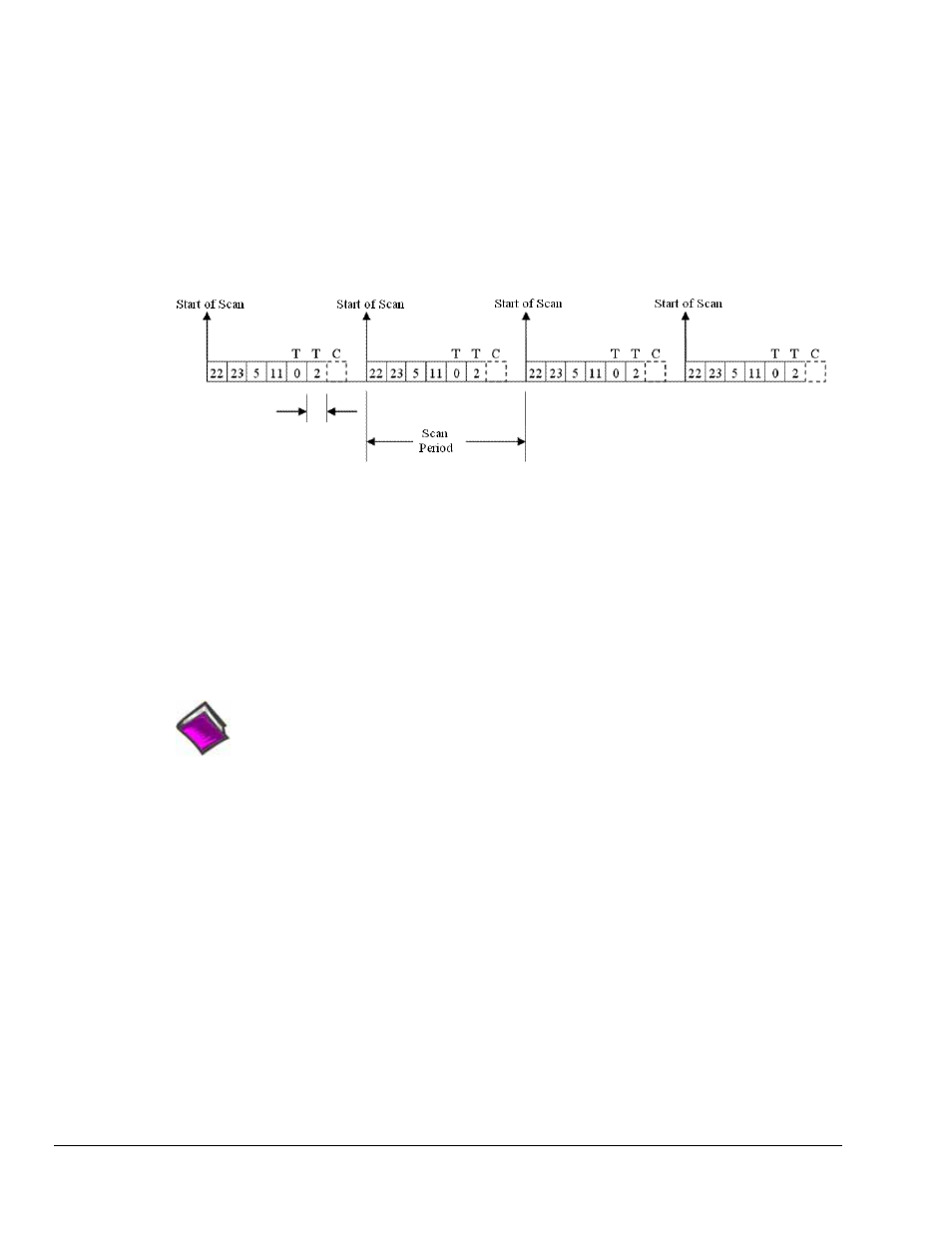Measurement Computing DaqBoard 3000USB Series User Manual
Page 34

1-8 Device Overviews
988093
DaqBoard/3000USB Series User’s Manual
Example 2: Analog channel scanning of voltage and temperature inputs
The scan is programmed pre-acquisition and is made up of 6 analog channels (Ch0, Ch2, Ch5, Ch11,
Ch22, Ch23.) Each of these analog channels can have a different gain. Channels 0 and 2 can be
programmed to directly measure thermocouples. In this mode, oversampling is programmable up to 16384
oversamples per channel in the scan group. When oversampling is applied, it is applied to all analog
channels in the scan group, including temperature and voltage channels. (Digital channels are not
oversampled.) If the desired number of oversamples is 256 then each analog channel in the scan group will
take 256 microseconds, the returned 16-bit value represents an average of 256 consecutive 1us samples of
that channel. The acquisition is triggered and 16-bit values (each representing an average of 256) stream to
the PC via USB2. Since two of the channels in the scan group are temperature channels, the acquisition
engine will be required to read a cold-junction-compensation (CJC) temperature every scan.
Programmable
Averaging up to
16384
In this example, the desired number of oversamples is 256, therefore each analog channel in the scan group
requires 256 microseconds to return one 16-bit value. The oversampling is also done for CJC temperature
measurement channels. The minimum scan period for this example is therefore 7 X 256 us or 1792
microseconds. The maximum scan frequency is the inverse of this number, 558 Hz.
Autozero may also be employed. This adds more channels to the scan group and further reduces the
maximum scan frequency. Autozero channels read an on-board, shorted analog input. Auto-zeroing
reduces drift due to fluctuating ambient temperatures or ambient temperatures outside the DC
specifications.
Reference Note:
Appendix B includes detailed information regarding signal modes, methods of noise reduction,
and averaging techniques.